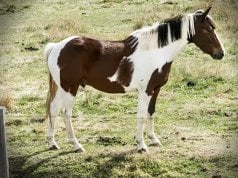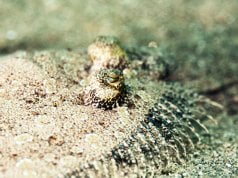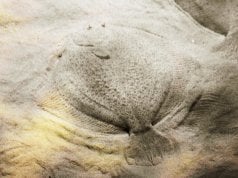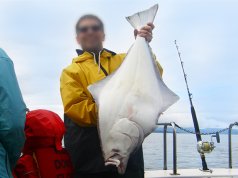The American bison, a majestic symbol of the North American plains, evokes images of vast herds roaming freely. But this iconic creature has a rich and complex history, far exceeding its popular representation. Beyond its imposing physique, the bison plays a critical role in the ecosystems it inhabits and holds a significant place in both Native American cultures and the broader story of the American West. This article delves into the fascinating world of Bison bison, exploring its evolution, behavior, ecology, and its enduring legacy.
The American Bison: A Natural History
Often mistakenly called a buffalo, the American bison is a distinct species. True buffalo belong to the African genus Syncerus or the Asian genus Bubalus. The American bison stands alone, a testament to millions of years of adaptation to the unique environments of North America. Two subspecies exist: the plains bison (Bison bison bison), far more numerous, and the wood bison (Bison bison athabascae), found in the boreal forests of Canada and Alaska. The wood bison is generally larger and darker in color than its plains counterpart.
Evolutionary Roots
The story of the American bison stretches back to the Pleistocene epoch. Ancient relatives of the bison crossed the Bering Land Bridge from Eurasia, gradually evolving into the species we know today. Fossil evidence reveals that several species of bison existed, with some reaching immense sizes. Bison latifrons, an ancestor of the modern bison, possessed horns spanning over eight feet. Over time, these larger forms dwindled, likely due to climate change and competition, eventually giving rise to the plains and wood bison.
Habitat and Distribution
Historically, American bison thrived across a vast range, stretching from Canada to Mexico and encompassing much of the Great Plains. Today, their distribution is fragmented. The largest populations are found in protected areas such as Yellowstone National Park, Badlands National Park, and various national wildlife refuges. Smaller, managed herds exist in other locations. Bison are remarkably adaptable, inhabiting grasslands, prairies, savannas, and even forested areas. They require access to water sources and open grazing lands.
Diet and Foraging Behavior
Bison are herbivores, primarily grazers, although they will browse on shrubs and trees when necessary. Their diet varies seasonally, depending on available vegetation. Grasses constitute the bulk of their intake, with sedges, forbs, and other plants supplementing their diet. They are bulk feeders, consuming large quantities of vegetation to meet their energy needs. Their specialized digestive systems, featuring a multi-chambered stomach, allow them to efficiently extract nutrients from tough plant matter. They use their broad snouts to sweep across grasslands, grazing efficiently over large areas.
Social Structure and Behavior
American bison are social animals, typically forming herds that vary in size depending on the season and resources. During the breeding season, herds may consist of mature males competing for mating opportunities and females with their calves. Outside of the breeding season, herds may be composed of females and young, with mature males often forming smaller bachelor groups. Bison communicate through a variety of vocalizations, body postures, and scent marking. Wallowing, depressions in the ground where bison dust bathe, serves as an important social gathering point and helps control ectoparasites.
Mating and Reproduction
The breeding season, or “rut,” typically occurs from late summer to early fall. Mature males compete for access to females through displays of dominance, including vocalizations, head butting, and sparring. Successful males mate with multiple females. Gestation lasts approximately nine months, with calves typically born in the spring. Calves are precocial, meaning they are relatively well-developed at birth and can stand and walk shortly after birth. Mothers are fiercely protective of their calves, forming a tight bond that lasts for several months.
Ecological Role and Interactions
American bison are keystone species, playing a critical role in maintaining the health and diversity of grassland ecosystems. Their grazing habits influence plant diversity and structure, creating a mosaic of habitats that benefit other species. Wallowing creates microhabitats that support various plants and invertebrates. Bison dung provides nutrients to the soil and serves as food for insects and other organisms. Their presence also impacts other large herbivores, such as pronghorn and elk, influencing their distribution and grazing patterns.
Bison frequently interact with other animals. Birds such as meadowlarks and cowbirds often forage for insects in bison pastures. Prairie dogs benefit from the disturbance created by bison hooves, which helps maintain their burrow systems. Coyotes and wolves occasionally prey on bison calves, though healthy adult bison are generally safe from predation.
Bison and Humans: A Complex History
For millennia, Native American tribes relied on bison for sustenance, shelter, clothing, and spiritual purposes. Bison were central to their cultures, providing nearly every aspect of their survival. The arrival of European settlers dramatically altered this relationship. Overhunting, driven by commercial interests and a desire to eradicate the bison to control Native American populations, led to a catastrophic decline in bison numbers. By the late 19th century, bison were on the brink of extinction.
Conservation efforts, spearheaded by dedicated individuals and organizations, helped prevent the complete loss of the species. Today, bison populations have rebounded, but they still face challenges, including habitat loss, genetic diversity concerns, and disease outbreaks. Ongoing conservation efforts are crucial to ensure the long-term survival of this iconic species.
Encountering Bison in the Wild: Safety First
If you encounter bison in the wild, maintain a safe distance, at least 25 yards (23 meters). These are powerful animals capable of running at speeds of up to 35 miles per hour. Never approach or attempt to feed bison. Be aware of your surroundings and watch for signs of agitation, such as head lowering, pawing the ground, or snorting. If a bison approaches you, slowly back away and seek shelter. Never run, as this may trigger the bison to charge.
Caring for Bison in Captivity
Zookeepers caring for bison must provide spacious enclosures that mimic their natural habitat, including ample grazing areas and access to water. A varied diet of grasses, hay, and supplemental feed is essential. Regular health monitoring and preventative care are crucial. Enrichment activities, such as providing dust bathing areas and rubbing posts, can help stimulate natural behaviors. Avoid overcrowding and ensure that enclosures are designed to minimize stress. Understanding their social dynamics is key to maintaining a healthy and thriving herd.
Fun Facts about American Bison
- Bison can live for 12 to 20 years in the wild.
- They have poor eyesight but an excellent sense of smell and hearing.
- Bison have a thick coat of fur that provides insulation in cold weather.
- Calves are reddish-brown in color, earning them the nickname “red dogs.”
- Bison can swim, and have been known to cross rivers and lakes.
- Their horns are made of bone covered with keratin.
The American bison stands as a symbol of the wild American West, a testament to resilience and the power of nature. Understanding its history, ecology, and behavior is essential for ensuring its continued survival and appreciating its vital role in the ecosystems it inhabits. By promoting conservation efforts and respecting these magnificent creatures, we can help safeguard their legacy for generations to come.

![Red Angus Closeup of a beautiful Red Angus cowPhoto by: U.S. Department of Agriculture [pubic domain]https://creativecommons.org/licenses/by/2.0/](https://animals.net/wp-content/uploads/2020/03/Red-Angus-4-238x178.jpg)




![Red Angus Closeup of a beautiful Red Angus cowPhoto by: U.S. Department of Agriculture [pubic domain]https://creativecommons.org/licenses/by/2.0/](https://animals.net/wp-content/uploads/2020/03/Red-Angus-4-100x75.jpg)

